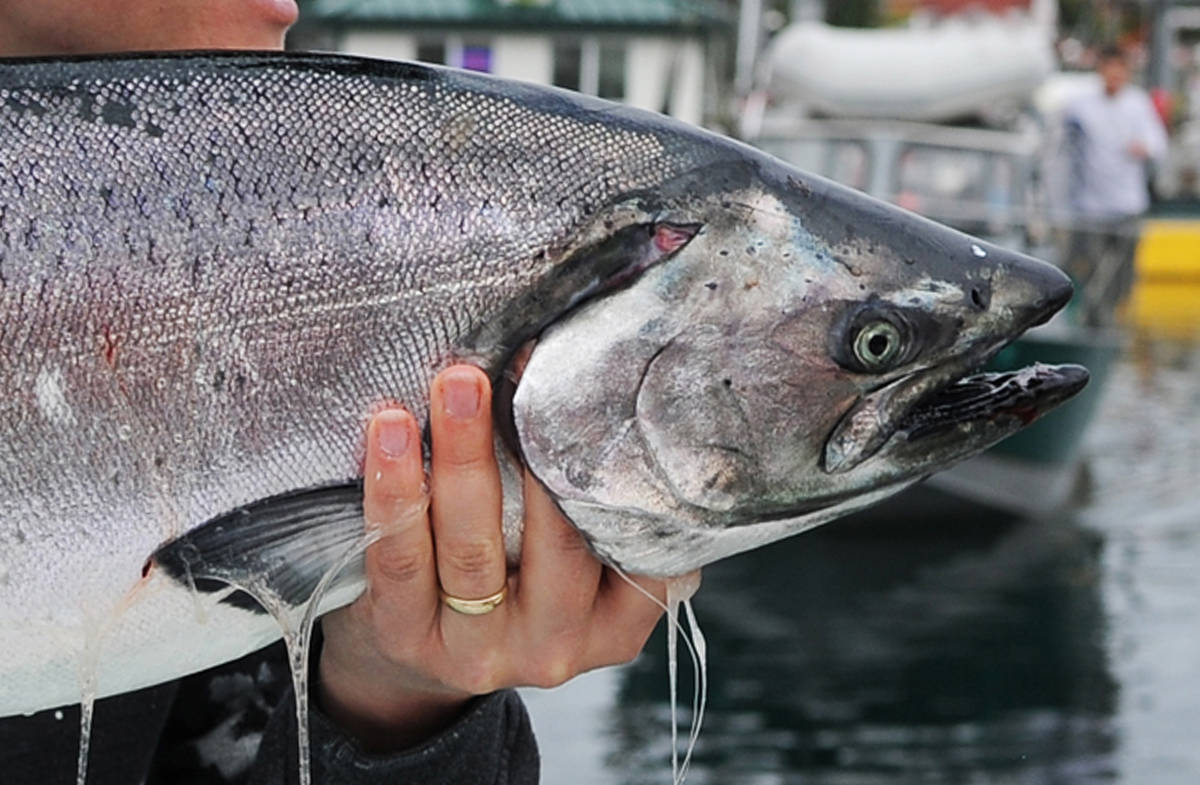The Alaska Department of Fish and Game issued several emergency orders for Kenai Peninsula fisheries Monday, including closing all sport fishing for king salmon on the Kenai River for a certain time period, limiting king salmon sport fishing on the Kasilof River and opening the Russian River Sanctuary early for sockeye salmon sport fishing.
Kenai River early-run king salmon
From June 10 to June 30 of this year, fishing for king salmon of any size, including catch and release, is closed from the mouth of the Kenai river upstream to the outlet of Skilak Lake.
From July 1 to July 31, the king salmon closure will continue from the ADF&G regulatory marker 300 yards downstream of the mouth of Slikok Creek upstream to Skilak Lake.
Any king salmon caught while fishing for other species may not be removed from the water and must be released immediately.
This closure is an effort to protect the returning king salmon population, which has been lower than what ADF&G biologists had forecast for this year.
As of Sunday, an estimated 583 large king salmon had passed the king salmon sonar station at river Mile 13.7, which is far below the preseason forecast of approximately 4,800 large king salmon. The current in-season projection estimates that the early-run end-of-season escapement will be between 1,475 and 2,193 large fish, which is well below the early-run escapement goal of between 3,900 and 6,600 large salmon.
Kasilof River early-run king salmon
From June 10 to June 30, king salmon sport fishing in the Kasilof River drainage will be limited to hatchery fish only and anglers will only be allowed to use a single hook with no bait.
The bag and possession limit for king salmon is two hatchery-produced fish that are 20 inches in length or greater.
Hatchery-produced king salmon are recognizable by a healed scar where the adipose fin has been clipped. Naturally produced king salmon, by contrast, will have an intact adipose fin, which is a small fleshy fin on the back of the fish in front of the tail. Naturally produced king salmon that are caught must be released immediately and cannot be removed from the water.
In addition, the use of bait is prohibited and only one unbaited, single-hook, artificial lure may be used for king salmon fishing. Single-hook is defined as a fish hook with only one point for the purposes of this emergency order.
The Kasilof River early-run king salmon sport fishery has a sustainable escapement goal of 700-1,400 naturally produced king salmon and is monitored through the ADF&G weir located on Crooked Creek.
This emergency order is in effect from the mouth of the Kasilof river upstream to the Sterling Highway Bridge.
Russian River sanctuary
Abundance information that has been gathered through Monday indicated that the early-run biological escapement goal for sockeye salmon of 22,000-42,000 fish will be achieved, so ADF&G is opening the Russian River Sanctuary Area to sport fishing earlier than usual.
“The Russian River early-run looks to be shaping up into an average-sized run and it is likely the escapement goal will be achieved while allowing anglers a little more time to target these fish,” ADF&G Area Management Biologist Colton Lipka said in a Monday press release from the department. “Fishing is likely to be fair on the opener but should improve towards the weekend and the following week.”
From June 11 to July 14, anglers will be permitted to sport fish for sockeye salmon in the Russian River Sanctuary Area.
During this time, anglers are limited three sockeye salmon of 16 inches or greater in length per day and six in possession. For sockeye less than 16 inches, the bag limit is 10 per day and 10 in possession.
From July 15 to August 20, fishing in this area will be limited to fly-fishing only. The bag limit will remain the same but will apply to both sockeye and coho salmon, but only one coho salmon per day and one in possession can be retained.
Anglers are reminded to remove fish carcasses whole or gutted/gilled from the clear waters of the Russian River. If cleaning your catch at the river, take the fish to the mainstem Kenai cleaning stations located at the confluence and ferry crossing to fillet and chop up sockeye salmon before throwing the small pieces into deep, flowing waters.
Anglers are also reminded to help slow the spread of COVID-19 by following all state health mandates.
For additional information on any of these emergency orders, contact Lipka at 907-262-9368.
Reach reporter Brian Mazurek at bmazurek@peninsulaclarion.com


